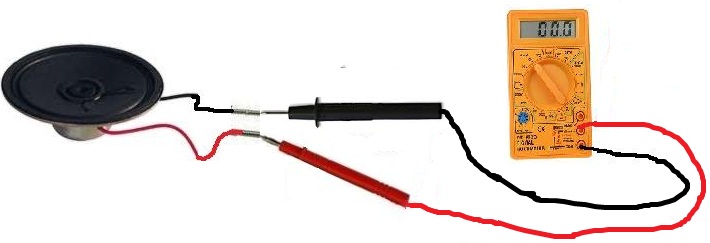How to Troubleshoot Speakers

Speakers are great devices which we all need for playing out sound.
Yet, at times, they die on us and fail to play back sound as we want them to.
How do you troubleshoot the speakers to see if it itself is the cause of no sound being played out or if it's due to some other issue in the circuit?
Measure the Speaker Impedance
One of the best ways to troubleshoot a speaker is to check the speaker's impedance (resistance) with a multimeter.

Speakers always come with a certain impedance rating. Common values of speaker impedances are 4Ω, 8Ω, 16Ω, and 32Ω. The impedance rating is usually specified on the back of the speaker.
When measuring the impedance of the speaker using a multimeter, place one probe on one terminal of the speaker and the other probe on the other terminal of the speaker. Because we're measuring the resistance, or impedance, polarity doesn't matter, so it doesn't matter which probe is on which terminal. When measuring the impedance, a good speaker will have an impedance at just about its impedance rating. Therefore, a 4Ω speaker will read about 4Ω. It may read 3.8Ω, 3.9Ω, 4.1Ω, but essentially, that's 4Ω.
If the impedance is at the speaker's rating, the speaker normally is good.
Reading Bad Impedance
When measuring speaker impedance, you may not read a value that the speaker is rated for. This means that the speaker is bad.
Low Impedance
If the speaker is measuring at a very low impedance, such as near 0 ohms, the speaker is bad. It is reading a short across the speaker. Likely something on the inside of the speaker broke and the positive and negative terminals of the speaker are shorted together. This is why the speaker reads a very low impedance.
In a case like this, the defective speaker must be replaced by a good speaker.
High Impedance
If the speaker is measuring at a very high impedance, such as several megohms, the speaker is most definitely bad. It is reading a high impedance because there is a broken connection in the speaker from the positive to negative terminal and the open path creates a very high resistance path, since it's open.
In a case like this as well, the defective speaker must be replaced with a good speaker.
In summary, measuring the impedance across a speaker is the best way of troubleshooting a speaker. All speakers have a rated impedance value and this value must be observed
when measuring its impedance. All speakers are two terminal devices, meaning they have a positive terminal and a negative terminal. All one must do is take a multimeter and set it to the
ohmmeter setting to read resistance. One probe goes into one speaker terminal and the other probe goes into the other speaker terminal. Normally, almost all the time that a speaker measures the correct impedance,
it is a good speaker and should work correctly.
